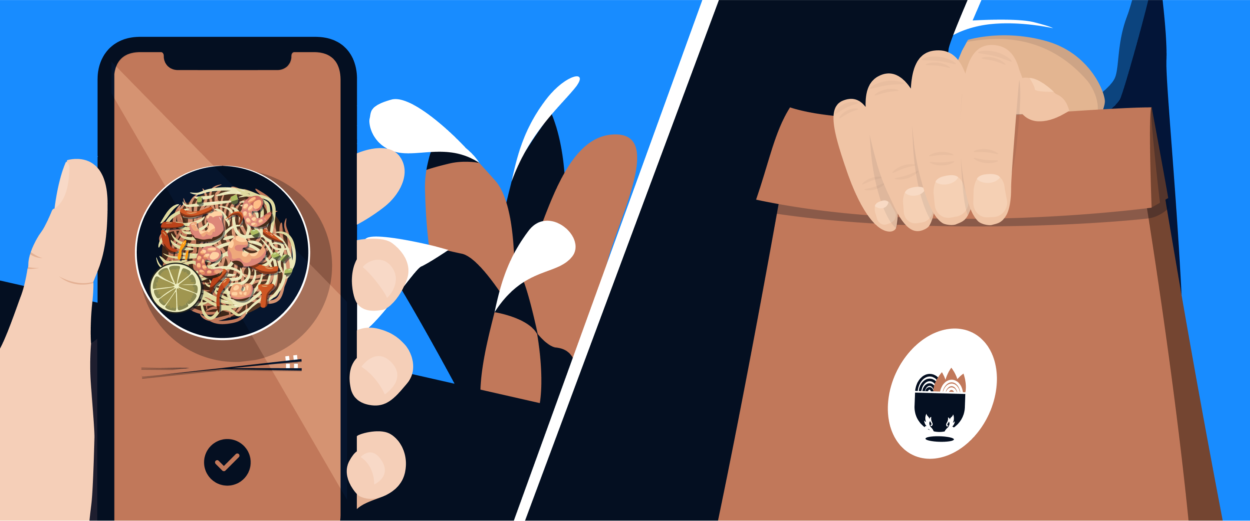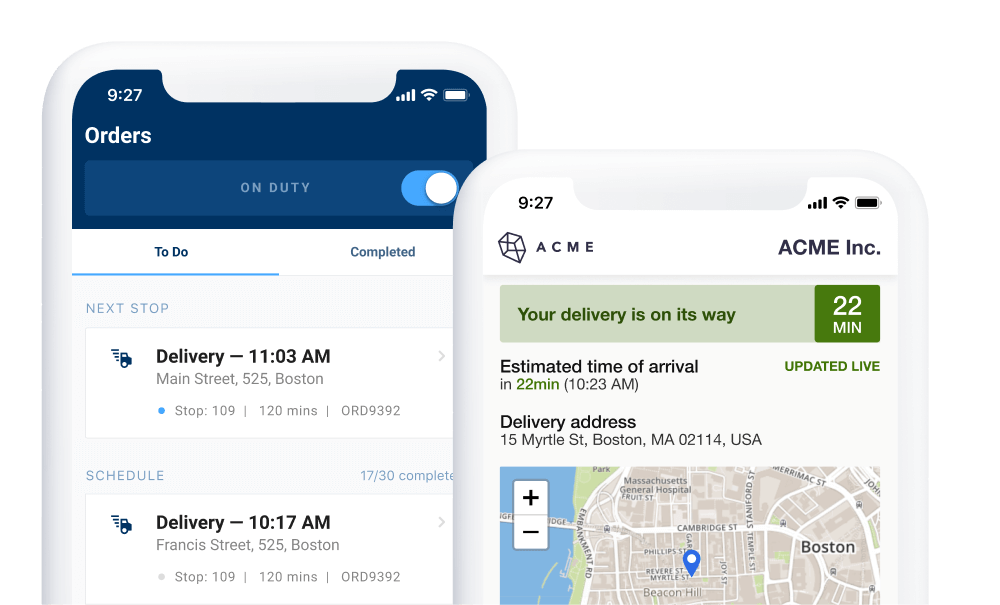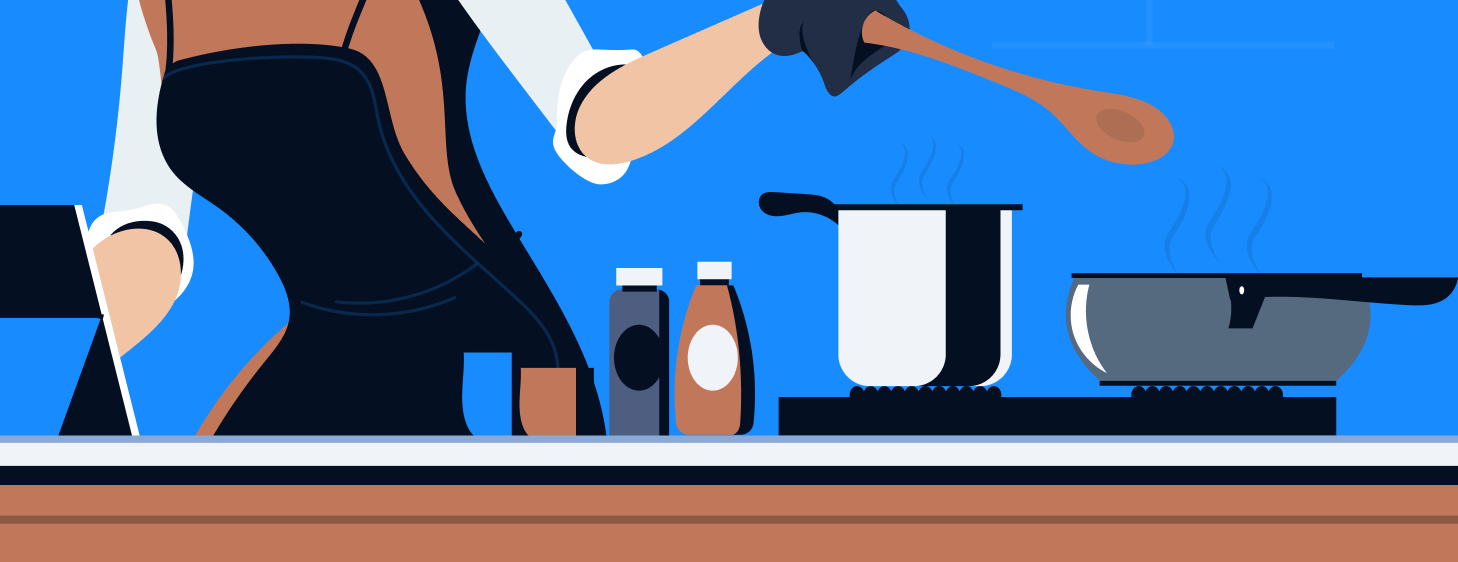The Restaurant Delivery Mistake You Need to Avoid

You have two options when it comes to delivery: do it yourself or use a courier service.
Hiring a restaurant delivery service/courier that handles only on-demand delivery sounds like a great idea: their business model is exclusively executing deliveries, and outsourcing should cut down on your overhead, right?
Unfortunately, wrong. Sanitation concerns, lack of connection with customers, and steep commissions make third-party couriers a big mistake for many small businesses.
It turns out that, in this case, the old adage rings resoundingly true: if you want something done right, do it yourself.
The Steep Cost of Courier Services
For restaurants that already operate with notoriously low margins, the expense involved with courier services can mean the difference between staying in business or going under.
Studies have shown that typical restaurants operate with net profit margins ranging from just 2% to 6% (pre-tax). Delivery services like Uber Eats, DoorDash, and Postmates take anywhere between 15% to 30% commission on every order. Check out our page on how much delivery drivers make here.
Based on these numbers, many restaurants are actually losing money on most orders delivered through a third-party courier. If a family-owned Italian restaurant receives a $50 delivery order, they will need to pay a courier between $7.50 and $15 to handle delivery. If that restaurant has a net profit of 6% after paying for ingredients, rent, labor, and other expenses, they would end up losing roughly $4.50 to $12 on just that one order.
Losing touch with your customers
As if this weren’t bad enough, restaurants that use a third-party courier give up control of customer data that should be informing menu changes, marketing decisions, and the future of their business. Entrusting customer experience to a courier service is risky. Deliveries can take longer, and courier vehicles may not be equipped with proper containment, refrigeration, or insulation.
Dylan Bolden, a senior partner at Boston Consulting Group, spoke about the tribulations of using food couriers, saying, “[Third-party couriers] are delivering a very valuable experience to the consumers, but they are still growing themselves. Their model isn’t completely ironed out yet to deliver a consistent experience.”
The overall trustworthiness of couriers has also been called into question as of late. Restaurants such as San Francisco’s Kin Khao have been appearing on sites like Grubhub without their permission, which has lead to confusion for restaurant owners and frustration for consumers.
Lack of food safety oversight
Outsourced delivery poses serious health and sanitation issues. In a survey conducted by US Foods, more than one in four delivery drivers admitted to taking food from an order they were delivering. This survey was based on responses from 497 adults who had worked for at least one food delivery app in the United States.
Couple this with the fact that 40% of more than 24,000 Americans surveyed said they don’t always wash their hands after using the restroom and outsourcing delivery becomes particularly bothersome. In an age where pandemic-related concerns are at the forefront of consumers’ minds, restaurants need to be certain that the people delivering their food are fully trained on food safety and handling guidelines. Using a delivery app makes this nearly impossible.
In-House Delivery Is an Investment in Your Future
In-house delivery is a great way to diversify your business and remain competitive amid technological advances and changing customer behaviors.
Restaurants can tap into a growing avenue for revenue by offering delivery, and many consumers prefer to order from establishments with an in-house team. Online food delivery will draw in almost $24 million in revenue in 2020, and that amount is expected to grow to nearly 30 million by 2024.
A 2018 study conducted by Technomic found that “78% of all delivery orders are placed directly through restaurants versus third-party delivery companies”. Another survey, conducted by Preoday, revealed a likely reason behind this. In Preoday’s study, 70% of respondents shared that they would prefer to order delivery directly from a restaurant so the money goes to that business.
Within this growing market sector, most consumers favor restaurants that don’t outsource their deliveries.
Add Delivery to Your Restaurant in 4 Simple Steps
There are four essential elements you’ll need to consider when starting or ramping up your in-house delivery process. Here’s a high-level overview of how to accomplish your goal.

For a step-by-step walk-through, see our piece on how to set up and manage delivery.
1. Create a physical delivery workflow
Delivery process efficiency hinges on how well you streamline your physical workflow. It’s important to set up a dedicated space for delivery orders. Make sure this space doesn’t interfere with your dine-in workflow so that drivers and waitstaff aren’t routinely getting in each other’s way. Small slowdowns and congestion add up quickly. You should also set up parking spaces or a drive-through area where delivery vehicles can be loaded efficiently.
Take into account how many delivery vehicles you have and how much space is available within each vehicle. If you deliver hot meals or frozen treats, you may need to invest in insulated delivery bags. Consider the type of delivery packaging you want to use, too. If your restaurant’s branding has an eco-conscious element, you may want to invest in biodegradable or reusable delivery containers.
2. Choose your software
With the right food delivery software, you’ll be able to scale quickly, deliver a better customer experience, and minimize costs. A great delivery tech stack typically includes at least a point-of-sale (POS) system and route-optimization software. You’ll be able to get delivery up and running quickly with a POS system, such as Toast or Upserve, that provides a digital/online ordering suite.
Route-optimization software, such as OptimoRoute, cuts down planning time for managers by enabling schedules and shift rotations to be drafted and easily modified up to 5 weeks in advance. OptimoRoute also reduces training time for drivers by automatically calculating the most efficient routes. Medvedgrad brewery was able to start delivering to customers their very first day using OptimoRoute.
Businesses can create a personalized customer experience by sending out customized delivery notifications through OptimoRoute. A Realtime Order Tracking link lets customers know precisely where their order is and when it will arrive.

Reduce your operational costs by 30%
Increase delivery capacity by 43%
Plan 7x faster
3. Train your team
Whether you’re hiring new drivers or transitioning your current staff into a delivery role, you’ll need to train them on food safety protocol and make sure each employee knows which tasks are their responsibility. Show your delivery team how to transport food without spilling (how to put it in their car) and where to pick up deliveries. Depending on local food-safety guidelines, you’ll want to determine whether delivery drivers are in charge of filling fountain drinks or whether waitstaff/kitchen staff should do this.
4. Let customers know you’re delivering
Once you have the aforementioned elements in place, it’s time to share the good news with your customers. To minimize your up-front costs, it’s a good idea to engage your patrons and turn your best customers into your strongest ambassadors by encouraging sharing. Create a hashtag that’s unique to your restaurant, and ask people to share photos and tag your business when they get their delivery.
The Secret Sauce

Restaurants of all types flocked to a delivery-based model as pandemic-related shutdowns began to take effect. While the struggles of social distancing will eventually subside, the benefits of offering delivery will remain. The truth is, long before COVID-19 was a household term, delivery was rising in popularity; companies that master it have the opportunity to set themselves up for long-term success in the face of adversity. Having the right software is key – and OptimoRoute is here to help. Start your free 30-day trial today, and see what a highly efficient delivery model can do for your business.
Try OptimoRoute™ for Free
No installation or credit card required


